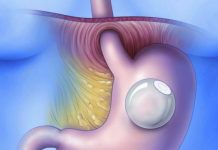If you are a man, you will never need a hysteroscopy, but as a woman, it may be necessary at some time in your life.
A hysteroscopy is a surgical procedure that allows the doctor to inspect the inside of the uterus, to either diagnose a problem or treat a condition.
A diagnostic hysteroscopy is a simple procedure that takes just a few minutes, and is often performed while you are awake, in the doctor’s surgery or the outpatients’ department of a hospital.
However, if the hysteroscopy is for the treatment of a previously diagnosed condition, it is performed under a general anesthetic in an operating theatre. A long hospital stay is not normally required, and the procedure is often performed in a day surgery facility.
Some women don’t want to know what is going to happen when they are under an anesthetic, but when the procedure is as simple as a hysteroscopy, there is nothing scary to worry about. The instrument used is called a hysteroscope and it is like a long, thin telescope for want of a better word.
It is passed into the cavity of the uterus, through the vagina and cervix, so the doctor can see if there are any abnormal conditions in the uterus, or to treat a condition. Sometimes a small sample of the endometrium, or uterus lining, is taken to be sent to pathology for testing.
There are several reasons why you may have been booked in for a diagnostic hysteroscopy. These include the need to investigate infertility, recurring miscarriages, heavy or irregular periods and post-menopausal bleeding.
If the doctor has requested a hysteroscopy for treatment, it could be to remove fibroids or polyps [Fibroid Treatment Options], to cauterize the endometrium, to locate a misplaced intra-uterine device (IUD) or remove intra-uterine adhesions.
While it is a relatively safe operation, there is always the chance of complications with any surgical procedure. Possible complications with a hysteroscopy include infection, bleeding and perforation of the wall of the uterus. These risks are greater for women who smoke or who are obese.
The procedure is not a very long one, even for hysteroscopy treatment and you can usually go home the same day as the surgery.
Some of the symptoms you might experience after the procedure are cramps which feel similar to period pain, mild bleeding, nausea, muscle pain, fatigue or fainting. These are perfectly normal and some symptoms can be expected.
You may need to have a day or two of quiet activity, or take this time off work, but after the bleeding has stopped, there is no reason why you can’t get back to your usual routine.
The operative hysteroscopy is the modern alternative to abdominal surgery, which is a major operation, requires a longer hospital stay and recovery is longer and more painful. In the past, this was the only option available to treat these conditions, or even to just diagnose the problem.
So whether you require a diagnostic hysteroscopy to find out what is causing your problem, or an operational hysteroscopy to perform the treatment required to fix it, this simple procedure is short and you are not kept from your normal activities for very long at all.
Make sure you ask your doctor for confirmation of any area you don’t understand, or have concerns about, before you have the hysteroscopy.












